Single point lubricators (SPLs) are automatic lubrication systems designed to supply a consistent and controlled amount of lubricant to a single lubrication point over a designated period. These compact, self-contained units offer a reliable solution for maintaining machinery across various industries, including manufacturing, automotive, and especially food production.
Let’s explore how SPLs work, the reasons production sites should use them, their main benefits, and their specific advantages in the food manufacturing sector.
How Single Point Automatic Lubricators Work
Single point lubricators consist of three key components: the reservoir (which holds the lubricant), a dispensing mechanism, and a method of driving the lubricant to the lubrication point. The delivery system typically operates through a spring-loaded, gas-driven, or electrochemical mechanism, pushing the lubricant at a controlled rate.
Spring-Driven: This type uses mechanical springs to release the lubricant gradually over time. The tension in the spring regulates the flow, ensuring consistent lubrication.
Gas-Driven: In these lubricators, gas generation is used to create pressure inside the device, driving the lubricant out. Electrochemical reactions within the unit produce gas, making the process highly efficient and reliable.
Electromechanical: These lubricators are powered by batteries and use motors or pumps to deliver precise quantities of lubricant. They allow for programmable settings, offering the highest level of control and customisation.
Once installed, SPLs deliver a controlled dose of grease or oil to a specific lubrication point, preventing over- or under-lubrication. The lubricant is dispensed over a period ranging from weeks to months, depending on the specific application and device settings.
Why Production Sites Should Use Single Point Automatic Lubricators
For any production site, ensuring that machinery runs smoothly is critical to maximising uptime, reducing maintenance costs, and increasing operational efficiency. SPLs play a key role in achieving these goals by providing an automatic, continuous supply of lubricant and, in our experience, at least double asset life (we have seen as much as 5 times life extension!) giving excellent Return On Investment.
Consistent Lubrication: Human error is reduced when lubrication is automated, ensuring machines are always receiving the correct amount of grease or oil, leading to fewer breakdowns.
Improved Safety: In some cases, manual lubrication may expose workers to dangerous or hard-to-reach areas. SPLs eliminate the need for workers to access these areas, enhancing workplace safety.
Reduced Maintenance Downtime: SPLs minimise the need for frequent manual lubrication, thus reducing equipment downtime and freeing up maintenance staff for other tasks.
Cost Efficiency: By ensuring optimal lubrication, SPLs reduce the wear and tear on equipment, lowering maintenance costs and prolonging machinery life. Furthermore, reduced unplanned breakdowns mean fewer production stoppages.
Eco-friendly Operations: SPLs help reduce lubricant wastage, as only the necessary amount is dispensed. This also prevents over-lubrication, which can lead to contamination of nearby areas and components.

Main Benefits of Single Point Lubricators
Precision and Reliability: SPLs provide highly accurate and consistent lubrication, which reduces the likelihood of equipment failures due to insufficient or excess lubrication.
Simplified Maintenance: Lubrication schedules become more predictable, making it easier for maintenance teams to manage equipment and focus on more critical tasks.
Extended Equipment Life: With consistent lubrication, moving parts are better protected from friction, heat, and wear, ultimately extending the lifespan of machinery.
Customisation: SPLs can be programmed to dispense lubrication at varying rates depending on the type of equipment and operating conditions. This flexibility ensures that specific machinery needs are met.
Time Saving: By automating the lubrication process, technicians spend less time on repetitive tasks, allowing for a focus on other essential maintenance activities.
Benefits of Single Point Lubricators in Food Manufacturing
In food production environments, maintaining machinery is critical not just for operational efficiency but also for meeting strict hygiene and safety standards. SPLs offer unique advantages tailored to the needs of this highly regulated sector, and fit perfectly into lubrication cultures using CIL (Clean, Inspect, Lubricate) where the units are regularly checked and refilled.
Hygienic Lubrication Solutions: SPLs designed for the food industry use food-grade lubricants, ensuring that any potential contamination of food products is avoided. These lubricants meet NSF H1 standards, which are safe for incidental contact with food.
Compliance with Food Safety Standards: Lubricants used in food production must adhere to stringent regulations like those outlined by the FDA or European Food Safety Authority (EFSA). SPLs help manufacturers meet these requirements through automated and controlled dispensing of certified lubricants.
Protection Against Contamination: By automating lubrication, SPLs reduce the need for manual handling, which decreases the risk of introducing contaminants into sensitive food production areas.
Reduced Production Downtime: In the highly competitive food industry, minimising equipment downtime is crucial. SPLs ensure machinery remains operational with minimal manual intervention, reducing the likelihood of unplanned stoppages that could impact production timelines.
Lubrication in Harsh Conditions: Food manufacturing environments often involve extreme conditions like high humidity, wet surfaces, or extreme temperatures. SPLs designed for these environments are robust, ensuring proper lubrication even in these challenging conditions.
Enhanced Worker Safety: In food processing plants, certain machines, such as ovens, mixers, or conveyors, operate at high speeds or temperatures. By automating the lubrication process, SPLs reduce the need for workers to approach these hazardous machines frequently.
Conclusion
Single point lubricators offer a host of benefits for production sites, especially in food manufacturing. Their ability to provide consistent, precise lubrication helps reduce machinery breakdowns, lower maintenance costs, and improve operational efficiency.
For food manufacturers, SPLs ensure that equipment is lubricated safely and hygienically, helping businesses comply with regulatory standards while minimising downtime and contamination risks. Implementing SPLs in your production site is a smart, cost-effective move that supports long-term operational success.
Fill in the form below to ask us about Single Point Lubricators ⬇









